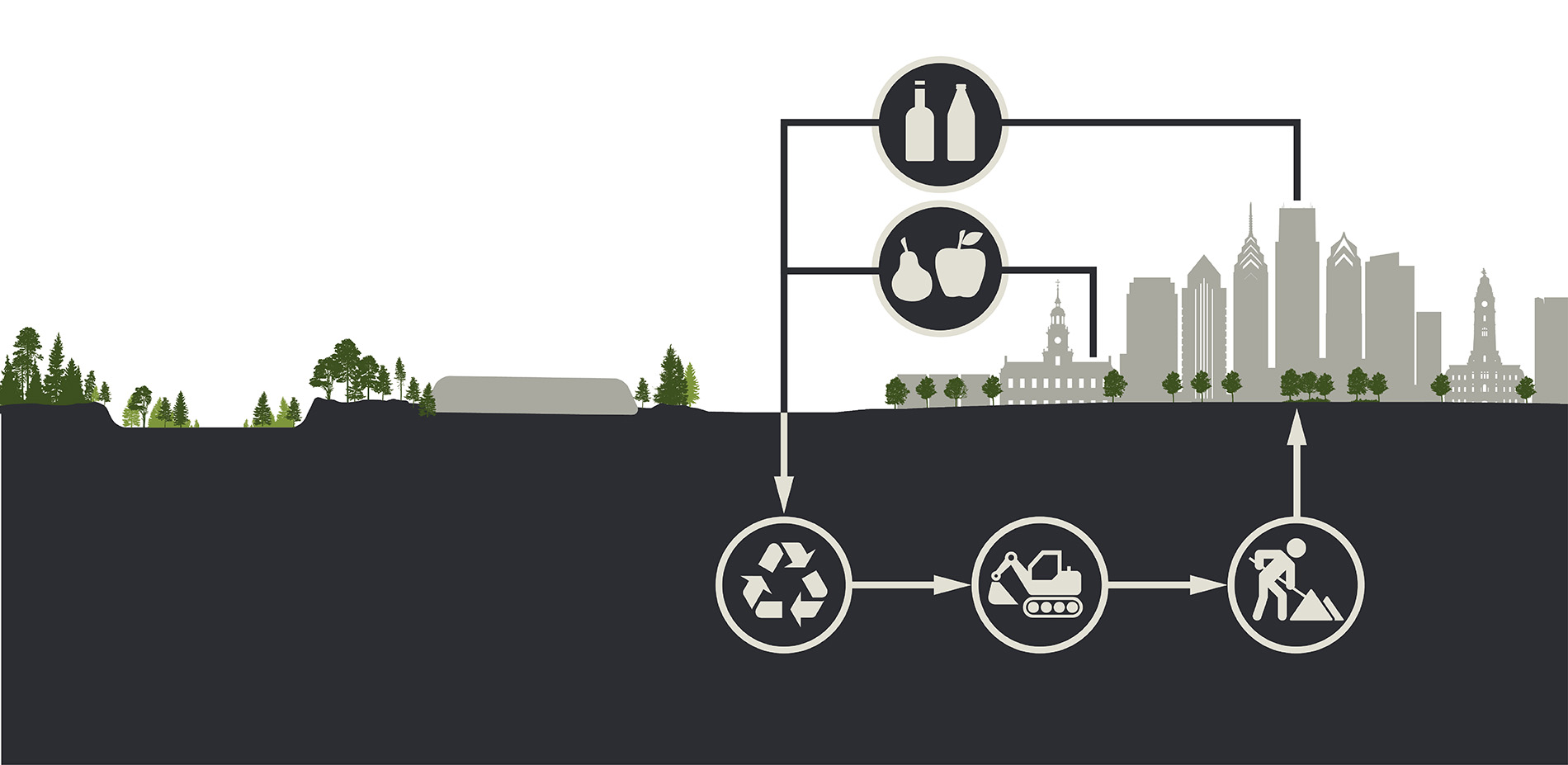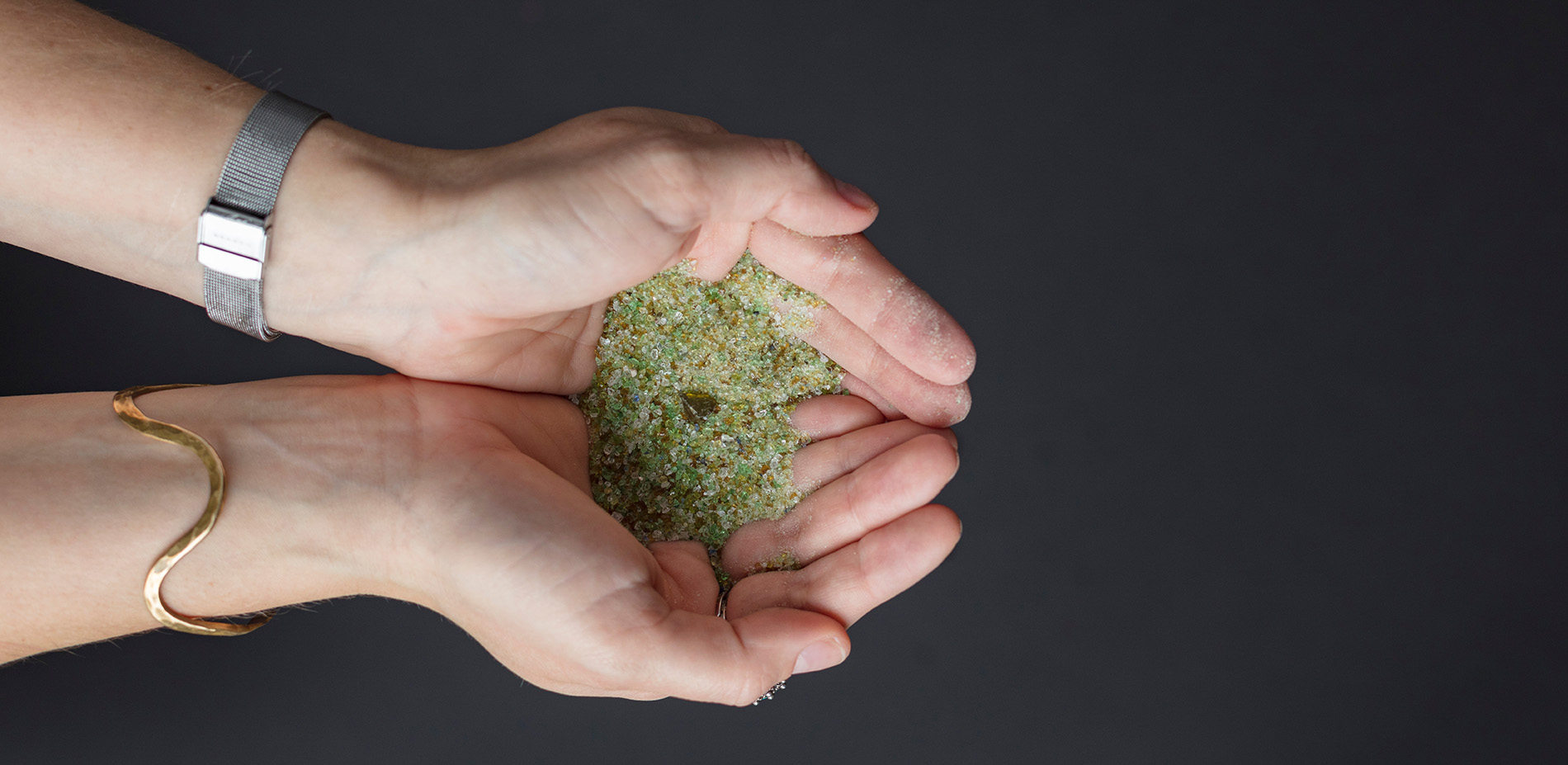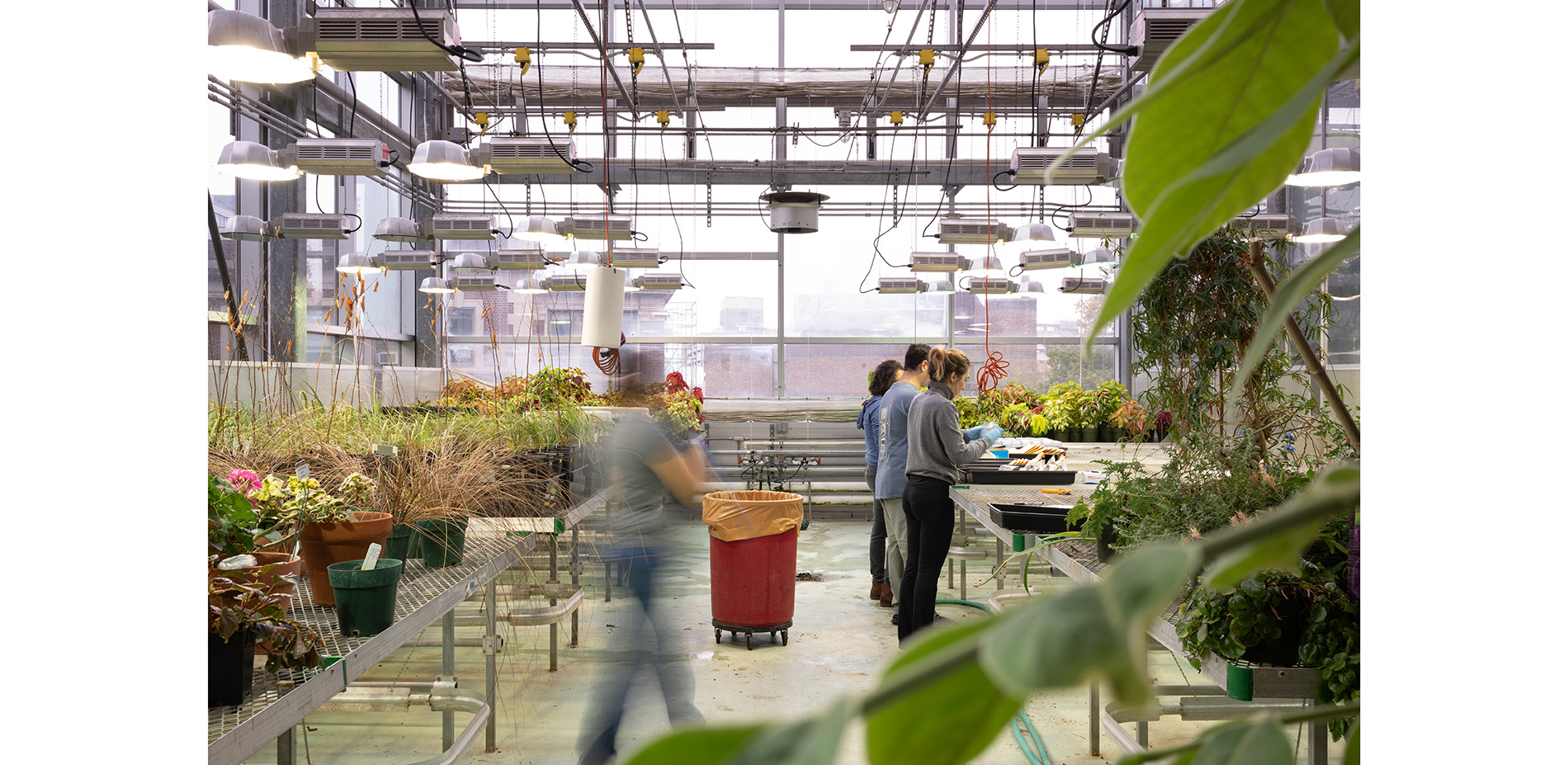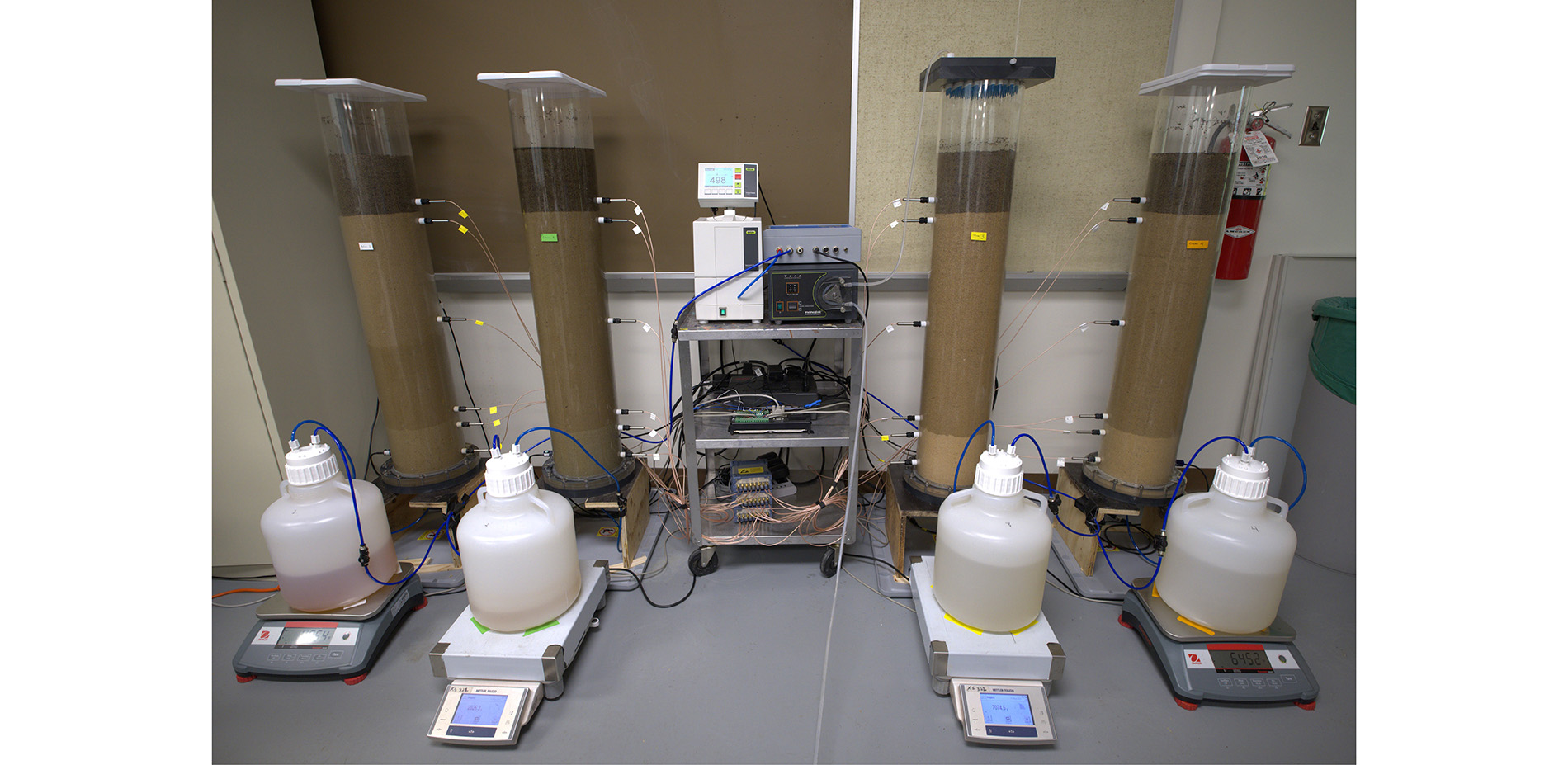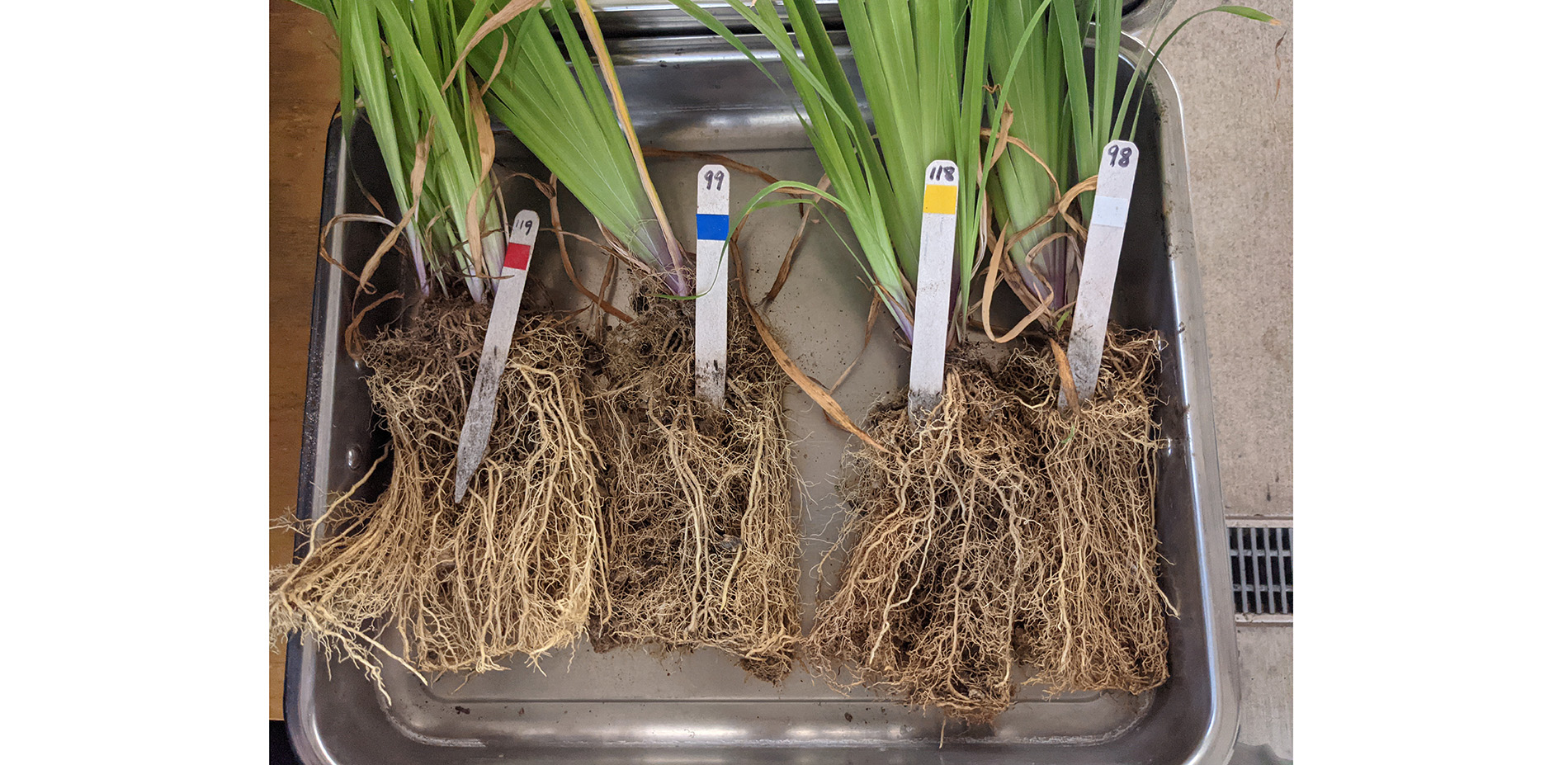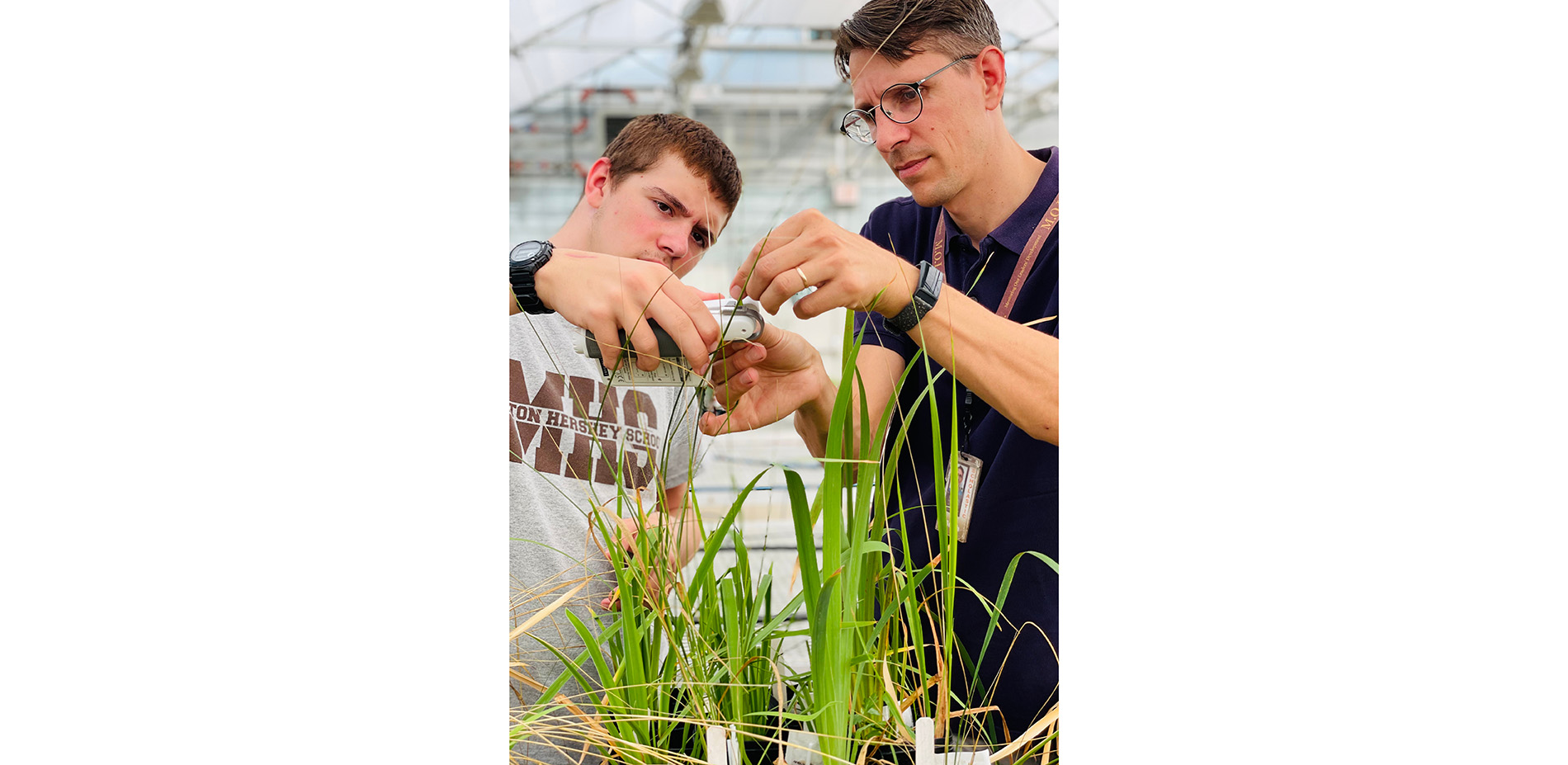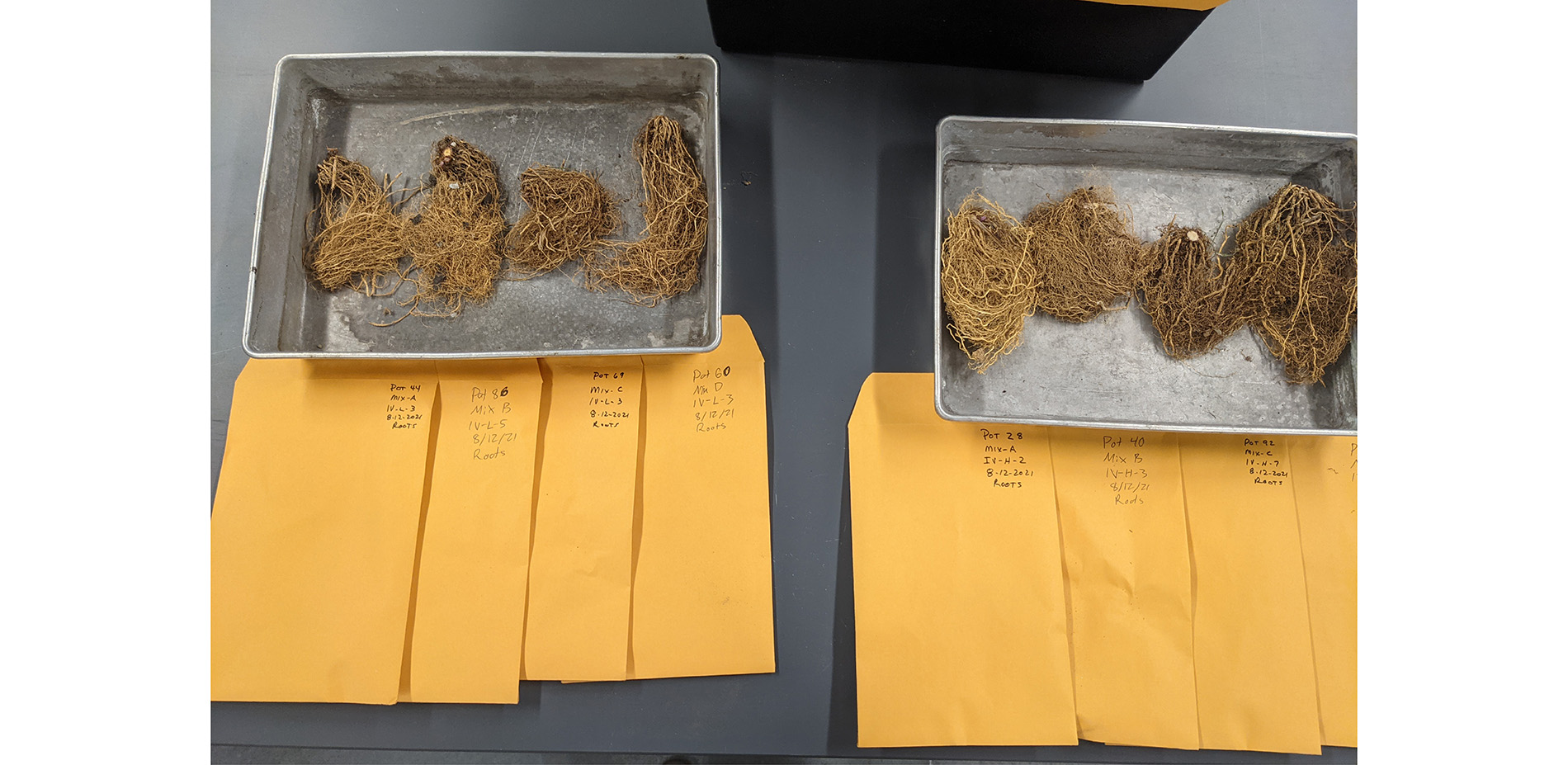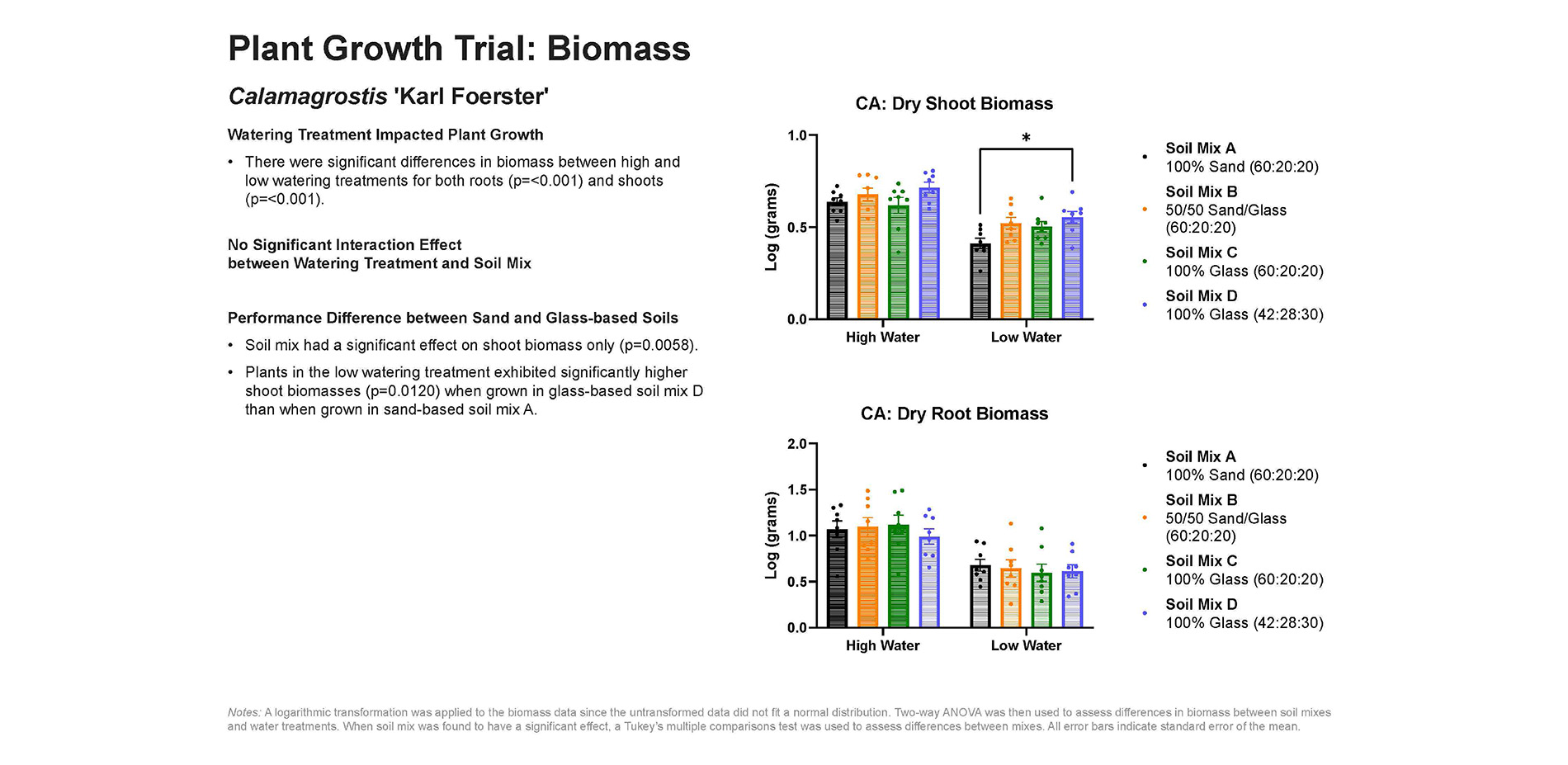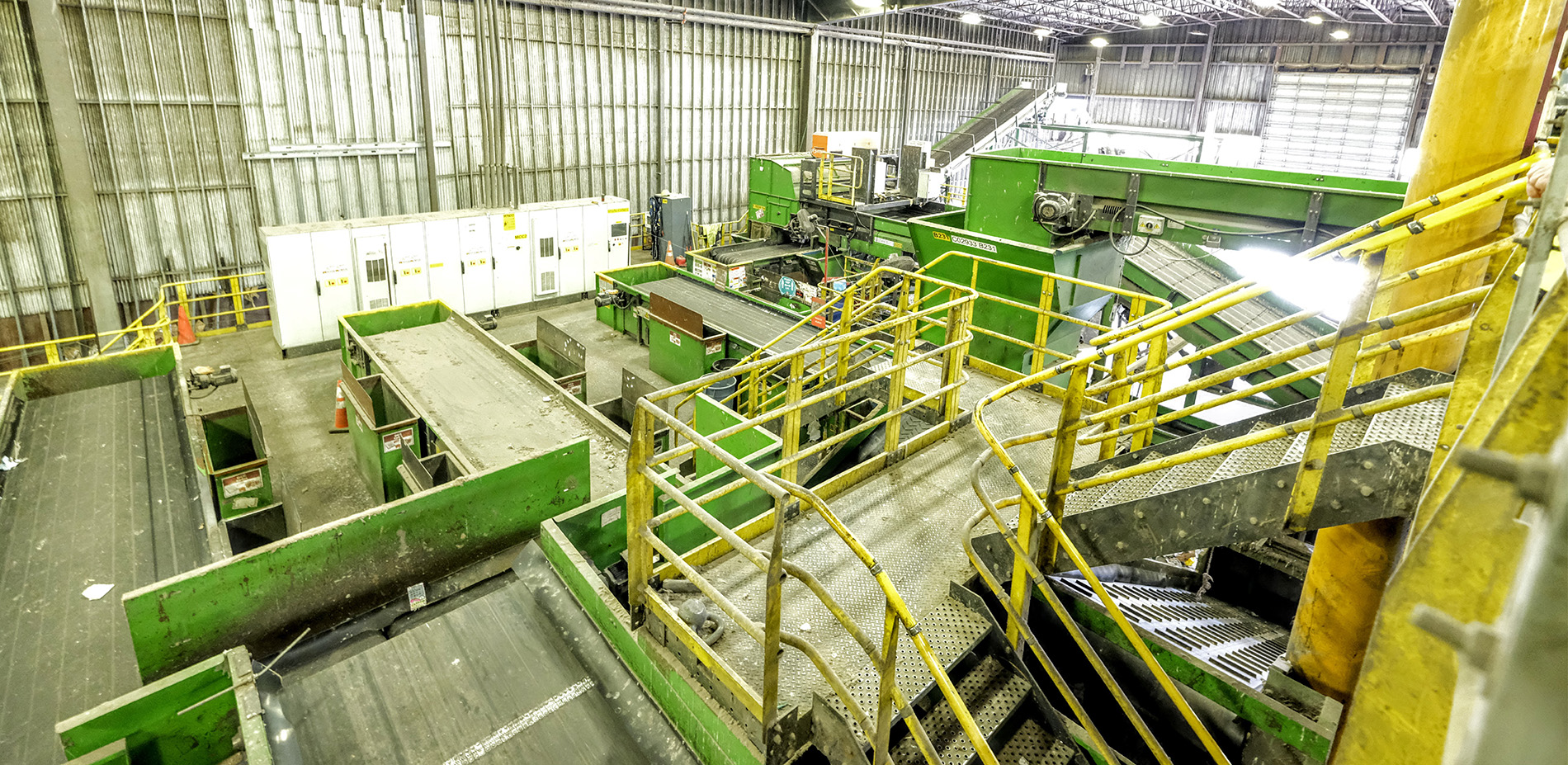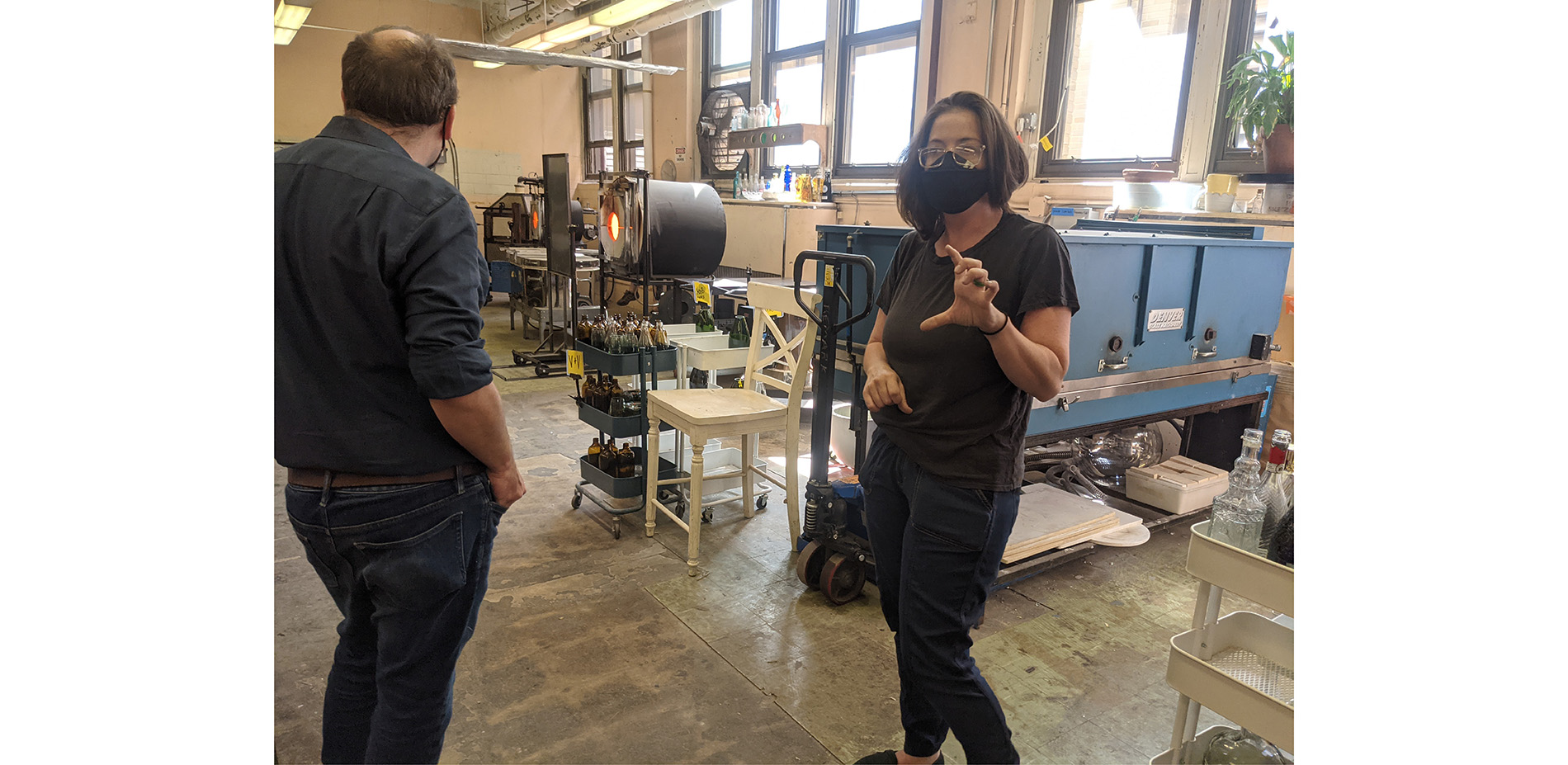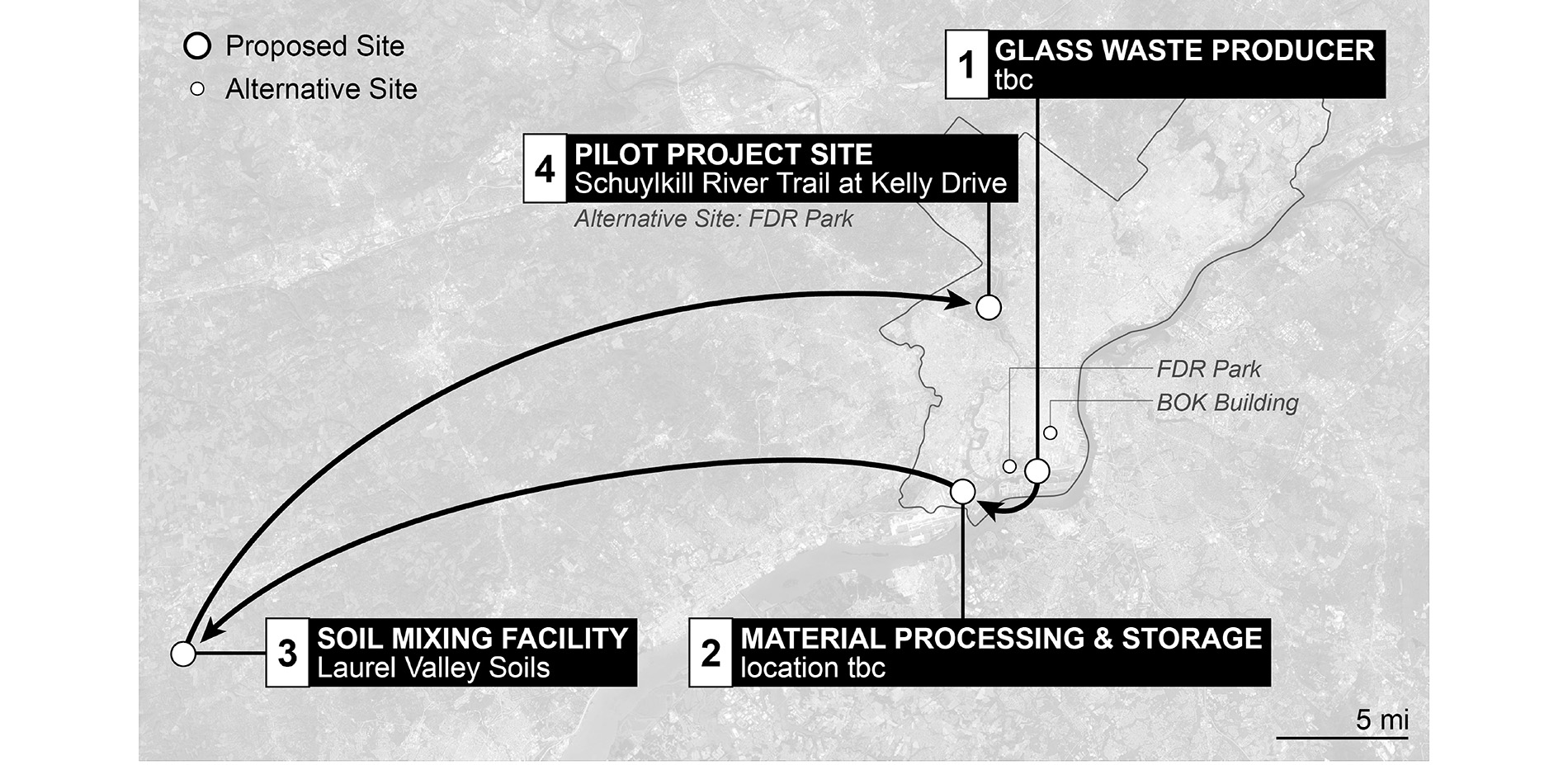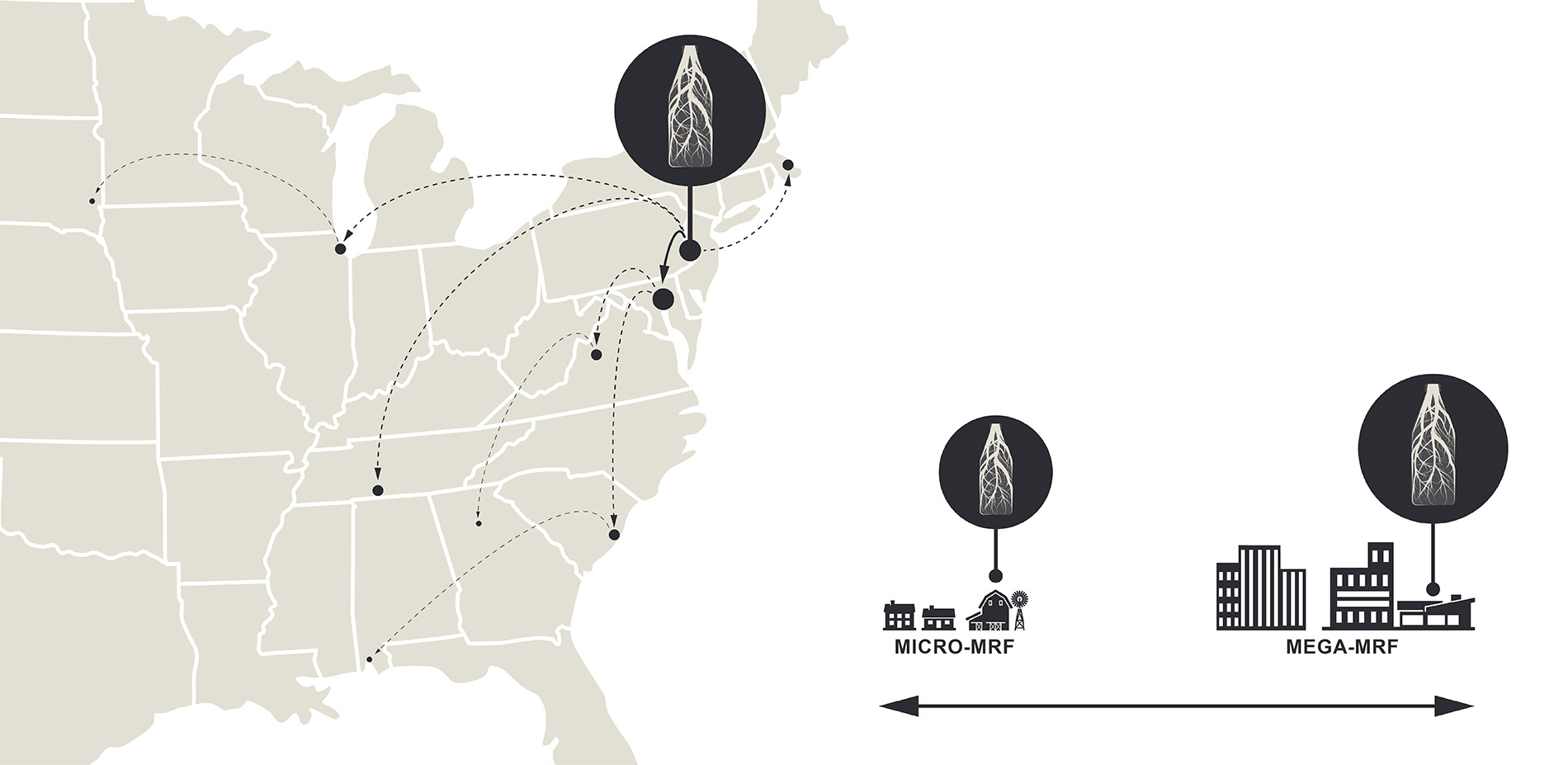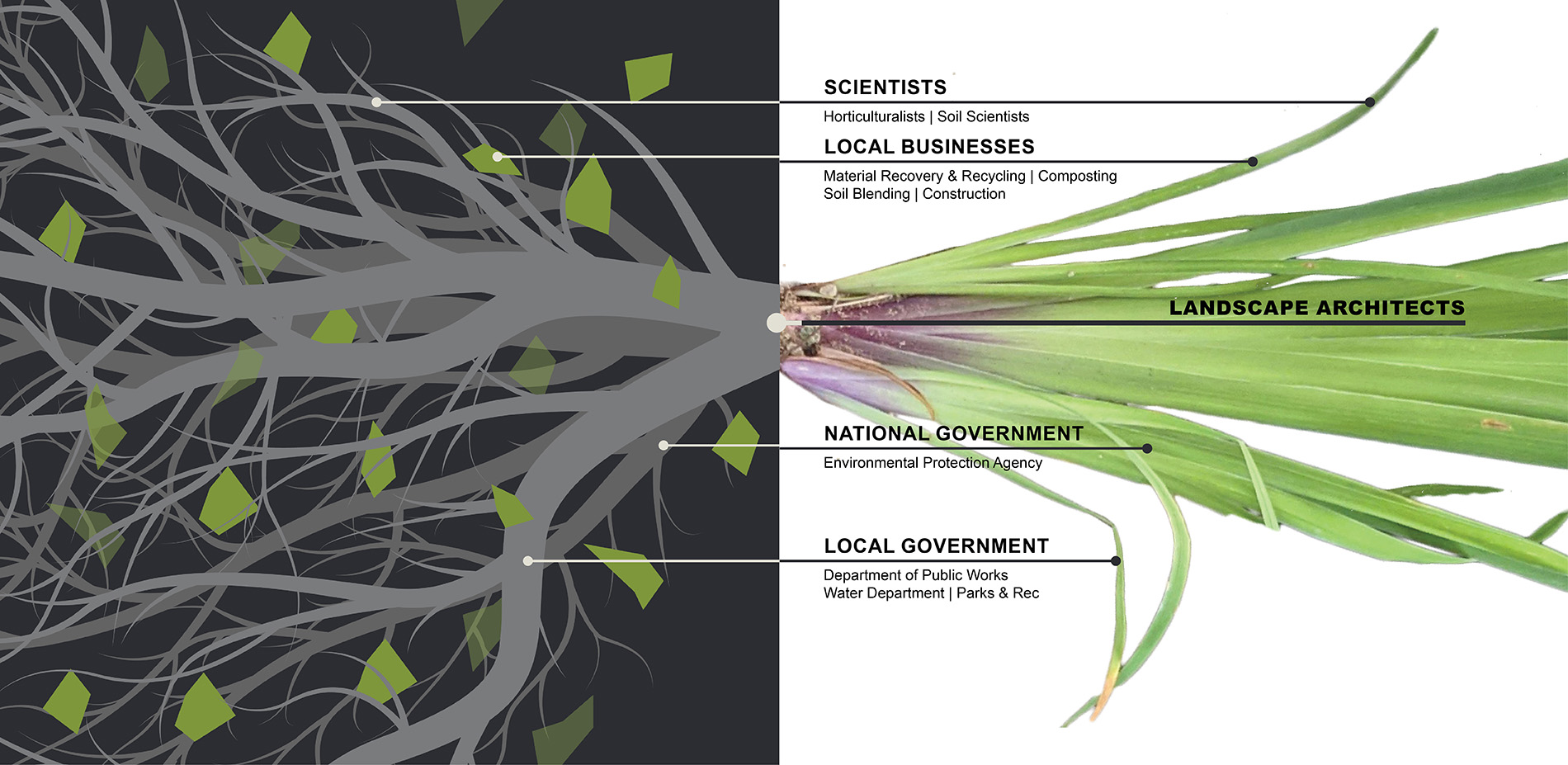Soilless Soils: Investigation of Recycled Color-Mixed Glass in Engineered Soils
Honor Award
Research
Philadelphia, Pennsylvania, United States
OLIN
Client: U. S. Environmental Protection Agency
The initiative has a goal of developing a replicable process scalable to small towns or big cities—all of which have a ready supply of glass and food waste and a demand for sand and gravel. The jury noted that producing more soil in a low-carbon manner will become critical to human survival and lauded this significant contribution to practice and materials-based research methods.
- 2022 Awards Jury
Project Credits
OLIN, Lead investigator and landscape architect
Temple University, Horticultural scientists
Pennsylvania Recycling Markets Center, Market and commercialization analysis
Andela Products, Glass processing equipment manufacturer and research consultant
Bottle Underground and ReMark Glass, glass-sand processor and research advisor
Craul Land Scientists, soil scientist
Engineering & Land Planning Associates, Pilot design and monitoring
Bennett Compost, food waste compost supplier and advisor
Circular Philadelphia, Logistics and commercialization consulting
Laurel Valley Soils, Soil blender and research advisor
Milton Hershey School, Greenhouse trial manager and student researchers
US Environmental Protection Agency, Funder
William Penn Foundation, Funder
University of Pennsylvania, Ian L. McHarg Center for Urbanism and Ecology, research advisor
Philadelphia Parks & Recreation, research advisor
Philadelphia Water Department, research advisor
Project Statement
Can engineered soils, designed for green stormwater infrastructure, include recycled pulverized glass rather than virgin sand to simultaneously reduce reliance on environmentally damaging materials and provide a sustainable outlet for a major waste stream? This practice-based applied research project seeks to answer this question, while also creating a scalable and replicable platform for green job creation and circular economics.
Recycling of solid waste materials, like glass, remains challenging to cities due to costs of recycling compared to landfill disposal. Today most American cities landfill all glass waste. Meanwhile, the world is running out of construction-grade sand. A practical solution for converting local solid waste to local usable infrastructure effectively is therefore critical. One landscape architecture firm is partnering with municipal agencies and a network of small businesses and nonprofits to significantly reduce the landfilling of glass and food waste through soil production. This applied research, funded by the US EPA, will be openly shared with municipalities across the country, to move the needle on domestic recycling and life cycle cost reduction in the built environment.
Project Narrative
Research Context and Aims
Sand and aggregate make up the most heavily extracted material group on the planet: above biomass and fossil fuels. These materials are ubiquitous in landscape architecture, particularly in green infrastructure applications. In many parts of the world, construction-grade sand is running out, and in the eastern US, Coastal Plain sand extraction disrupts sensitive ecosystems.
Meanwhile, glass recycling in the U.S. is in a state of crisis. While glass is theoretically highly recyclable, in practice, most cities don’t have the technical capacity to clean and sort mixed color glass from single stream collection, nor do they have market outlets for glass cullet. For these reasons, the vast majority of waste glass in the U.S., including 100% of the glass collected in Philadelphia (where this initiative is focused) is sent to the landfill as “non-recyclable residue.” In Philadelphia alone, this means that over 90,000 tons of glass is disposed of annually at a cost of approximately $140/ton to the city and its residents and businesses.
Landscape architects (LAs) have become increasingly concerned with the life cycle costs of our projects, but LA practices struggle to address aspects of our work that are fundamentally extractive and wasteful. Nowhere is this more evident than in the manufacturing of engineered soils from natural components (sand, mined topsoil, peat, etc) for use in cities. The Soilless Soil initiative seeks to address this issue directly, by closing the loop on two costly urban waste streams–glass and food–and dramatically reducing the volumes of virgin materials procured for urban greening. Current research funding from the US EPA supports a constellation of local small businesses and municipal partners, to create a closed loop economy for glass and food waste in Philadelphia, contributing to the city’s ecological and economic sustainability and resilience.
Connecting Research & Practice
The Soilless Soil initiative originated from questions arising from real-world landscape architecture projects, within private practice, and aims to generate findings that can be shared freely and integrated back into the practice of landscape architecture.
Since the start of the research initiative in 2017, the lead LA firm has collaborated with two universities, Philadelphia city agencies, circular economy nonprofits, soil scientists, green stormwater infrastructure experts, and companies engaged in glass recycling, composting, and soil blending. This team is pursuing two simultaneous research tracks: (1) developing a manufacturing process and material specification for a glass-based soil blend (GBS) that contains recycled glass-sand and food waste compost; and (2) technical and commercial planning to develop economically feasible systems for manufacturing and utilizing the proposed GBS blend locally. The lead LA firm is leading both research tracks.
Past Research Findings
The comparative life cycle assessment (LCA) that our team completed in 2019 demonstrated that recycled glass-sand may reduce greenhouse emissions by 67% compared to virgin sand. A 2019 pilot greenhouse trial showed that glass-based soils supported plant growth as well as a control mined-sand mix. Our 2020-21 material analysis, and mesocosm study tested the material’s infiltration performance and leachate, critical to maintaining water quality in urban green stormwater infrastructure (GSI) and found glass-based soil to be a feasible alternative to conventional GSI soil.
US EPA Phase I Study: Completed 2021
The Research Team was awarded an EPA Small Business Innovation and Research (SBIR Phase I) award in 2021, to support further research and to bring the material to commercialization. The Research Team addressed the design of a glass-based soil (GBS) prototype material and a scalable manufacturing (glass pulverizing and soil blending) process that will allow municipalities to divert waste glass into locally manufactured GBS.
The project built on four years of previous research by taking the most effective soil blends, testing them as planting media in a pilot growth trial, and designing a manufacturing process that will produce them at minimal economic and environmental cost. This Phase I study included:
Task 1: Use glass pulverizing equipment and municipal mixed-color glass cullet to produce the glass-sand used in the greenhouse planting trials.
Task 2: Perform greenhouse planting trial comparing various mix ratios.
Task 3: Develop a set of material specifications to be shared with manufacturers and municipal partners.
Task 4: Provide a technical planning package to Philadelphia city agencies.
We designed and produced three prototypical GBS mixes, using equipment produced and operated by Research Team members (Task 1). These mixes were used in a 12-week greenhouse planting study and consisted of sand (either glass-sand or mined sand), natural loam, and food waste compost (Task 2). The trial showed no difference in plant growth between test and control soil mixes.
In parallel to the greenhouse growth trial, the Research Team worked with Philadelphia Parks and Recreation and a network of private and nonprofit entities locally, to produce a technical plan and manufacturer specification that will facilitate the production and commercialization of glass-based soil in the region.
US EPA Phase II: Underway (2022-23)
Building upon Phase I research and development initiatives, Phase II of the project will incorporate glass-based soil mixes (GBS) into a full-scale green stormwater infrastructure (GSI) field experiment and will launch a pilot glass-based soil manufacturing hub. In collaboration with the Philadelphia Water Department (PWD) and Philadelphia Parks & Recreation (PPR), existing stormwater bioretention basins (which were damaged by flooding during Hurricane Ida) will be retrofitted with the glass-based soil mixes and monitored over one year for plant health and hydraulic performance. The following metrics will be continuously monitored in the five bioretention basins throughout the 12-18-month monitoring period; water quality, soil moisture/retention, soil infiltration, soil compaction, flow rate, plant transpiration, and plant health.
Phase II will facilitate collaboration among local material processing businesses to begin pilot production of the GBS prototype locally. Project funds will be used to purchase a new glass-pulverizing system and secure a processing site for a local glass recycling nonprofit (and member of the Research Team). This will allow them to establish a glass-sand hub that will support future municipal demand for the material. The Team will source (from commercial entities) and process glass-sand within city limits and send it to PWD’s pre-approved soil blender to produce the GBS prototype for the Pilot Project.
Impact & Future Directions
The goal of the Soilless Soils project is to design and disseminate a sustainable process for turning urban waste into high-performing infrastructure, while creating green jobs and supporting a circular economy. To this end, all research findings will be made free and open to the public, so that the process can be replicated and scaled in any municipality. The strength of this proposition is that the technical and economic requirements for setting up a glass-processing facility is quite low, and can be scaled to small towns or big cities. Furthermore, every city has a ready supply of glass and food waste and a demand for sand and gravel. Connecting these dots, as our research and pilots have shown, is an attainable goal.
The Soilless Soils research initiative provides a model for practice-based, collaborative research that effectively bridges the gap between theory and practice (or between pure and applied research) through tools and skills that are central to the landscape architecture profession. It demonstrates the potential for design professionals to initiate and lead empirical research into sustainable materials, while constellating teams of experts and advocates that can bring research findings into real-world application in real time. As far as we have been able to ascertain, this project is the first landscape-architect-led project ever that has received Phase I+II SBIR funding from the US EPA. We hope that it will provide a roadmap for practices in our field to take on this type of barrier-breaking research by recognizing the cross-disciplinary design thinking expertise that the profession has to offer.


